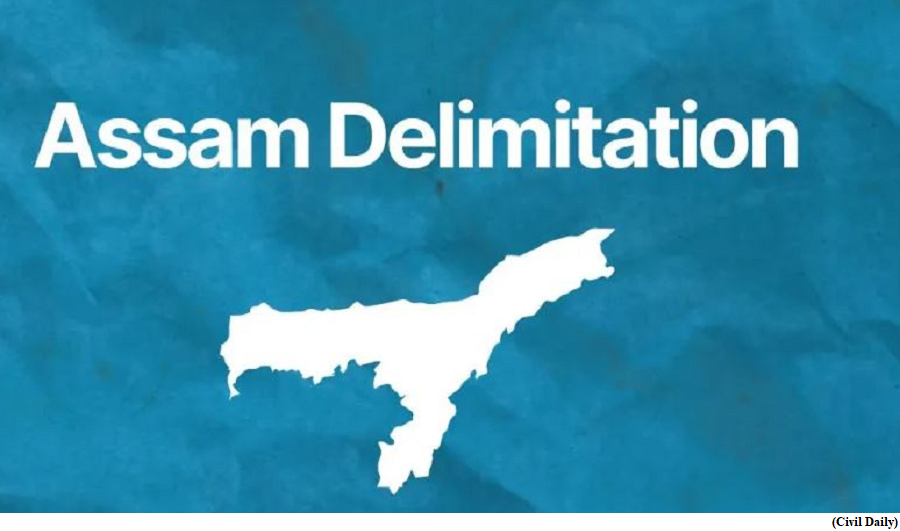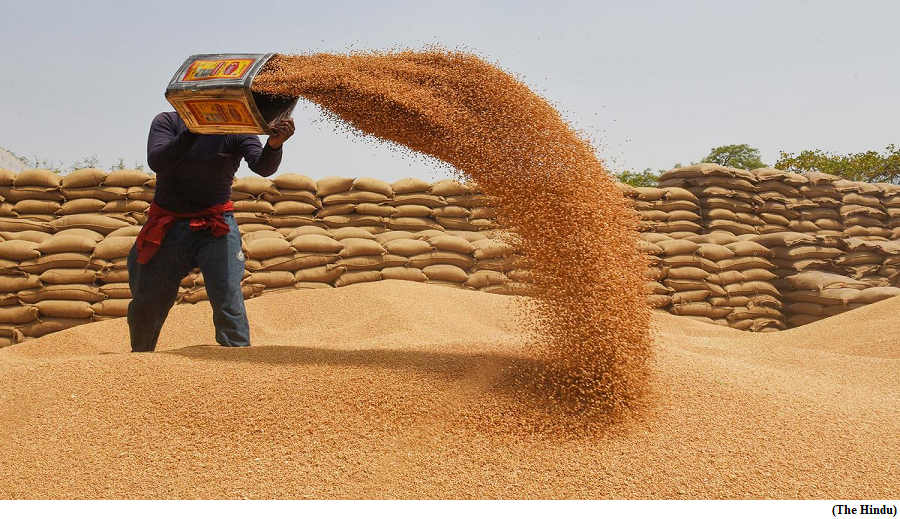Exploring Assam’s delimitation draft (GS Paper 2, Governance)

Why in news?
- Recently, the Election Commission (EC) released a draft proposal on the delimitation of the Assembly and Lok Sabha constituencies in Assam.
- The number of Assembly and Parliamentary seats remains unchanged at 126 and 14 but many constituencies were proposed to be reshaped and the number of reserved seats has been increased.
How did the delimitation exercise come about?
- Delimitation is the process of redrawing boundaries of Lok Sabha and State Assembly constituencies based on a recent Census to ensure each seat has an almost equal number of voters.
- It is ideally carried out every few years after a Census by an independent Delimitation Commission formed under the provisions of the Delimitation Commission Act. Such panels were set up in 1952, 1962, and 1972 before the exercise was suspended in 1976 due to the family planning programme.
- Before the exercise of the next panel could be completed in 2008, the delimitation of Arunachal Pradesh, Assam, Jammu and Kashmir, Manipur, and Nagaland was deferred due to “security risks” through presidential orders.
- The Centre reconstituted the Delimitation Commission for the four north-eastern States and the Union Territory of Jammu and Kashmir on March 6, 2020.
- The EC notified the initiation of Assam’s delimitation on December 27, 2022, following which four districts were re-merged with the ones they were carved out of.
What are the changes proposed?
- If the draft is accepted, 24 Assembly seats would be reshaped and renamed while the number of reserved seats for the Scheduled Tribes (ST) and Scheduled Castes (SC) would be increased from 16 to 19 and eight to nine respectively.
- The reserved seats would also be juggled – six each for the SCs and STs would become unreserved while nine ST and seven SC general seats would become reserved.
- The number of reserved Lok Sabha seats (two ST, one SC) would remain the same but Silchar would become reserved for SCs in place of Karimganj.
What’s next?
- The EC said the proposal was based on suggestions from 11 political parties and 71 other organisations although Congress skipped a meeting with the election panel team that visited Assam a few months ago.
- The EC has sought “suggestions and omissions” by July before visiting the State again for meeting various stakeholders.
The Open Market Sale Scheme for wheat and rice
(GS Paper 3, Economy)
Why in news?
- States have been looking at alternative ways of procuring wheat and rice in the after the Food Corporation of India’s (FCI) imposed quantity restrictions followed by the refusal to allow States to procure the two food grains through its Open Market Sale Scheme (OMSS).

Details:
- The Centre has made it clear that the reason for restricting supplies per bidder and eventually excluding states from procuring through auctions was to curb inflation and regulate supply.
- States such as Karnataka and Tamil Nadu have criticised the government for engaging in “politics” at the expense of marginalised beneficiaries of State welfare schemes.
What is the Open Market Sale Scheme?
- Under the Open Market Sale Scheme, the FCI from time to time sells surplus food grains from the central pool especially wheat and rice in the open market to traders, bulk consumers, retail chains and so on at pre-determined prices.
- The FCI does this through e-auctions where open market bidders can buy specified quantities. States are also allowed to procure food grains through the OMSS without participating in the auctions, for their needs beyond what they get from the central pool to distribute to NFSA (National Food Security Act) beneficiaries.
- OMMS was operationalised by the FCI in January 2023.
How has the Centre revised the OMSS?
- The Centre decided to restrict the quantity that a single bidder can purchase in a single bid under the OMSS. While the maximum quantity allowed earlier was 3,000 metric tonnes (MT) per bid for a buyer, it will now range from 10-100 metric tonnes.
- The FCI claims that the quantities have been reduced this time “to accommodate more small and marginal buyers and to ensure wider reach of the scheme”.
- The objective behind the move is also to curb retail prices as allowing smaller bids should ideally break monopolies of bulk buyers, allowing more competitive bids by small buyers.
- First, the Centre had decided to reduce the quantity a particular bidder can purchase under the OMSS, but in June, it stopped the sale of rice and wheat from the Central pool under the OMSS to State governments, also disallowing private bidders to sell their OMSS supplies to state governments.
How have States reacted?
- In Karnataka, the Anna Bhagya scheme to give rice to marginalised families was a part of the Congress government’s poll promise.
- The leaders of Congress accused Centre of conspiring to “fail” the State government’s poll guarantee by ensuring the State did not receive the required amount of rice to implement the scheme.
- Tamil Nadu is trying to purchase 50,000 tonnes of rice from government agencies other than FCI.
WMO revives ozone-UV bulletin after 7 years
(GS Paper 3, Environment)
Why in news?
- The stratosphere ozone layer is slowly recovering and the recovery will be complete in most parts of the atmosphere in the coming decades, according to the latest bulletin by the World Meteorological Organization (WMO).

WMO-Global Atmosphere Watch bulletin:
- The bulletin with the updated status of the ozone layer by WMO-Global Atmosphere Watch bulletin returned after a gap of seven years. Until 2016, it was brought out by WMO in collaboration with the European Ozone Research Coordinating Unit.
- The annual bulletin will provide the latest information on stratospheric ozone and ultraviolet radiation around the world.
Depletion of the ozone layer:
- The ozone layer protects life on Earth from harmful solar ultraviolet (UV) radiation.
- Depletion of the ozone layer, which was first observed in the 1980s, allows free passage of UV rays into the inhabited layers of the atmosphere, causing skin cancer, cataracts and damages the immune system. The rays also harm other ecosystems by altering biochemical processes and growth of species.
- Thus, monitoring and protecting the ozone layer is imperative for the health of humans and the environment. To this end, the Montreal Protocol of 1987 banned the production and consumption of ozone-depleting substances.
- As of today, 99 per cent of their production and use has been phased out.
Key observations:
- Strong signs were recorded that indicate the ozone layer over the Antarctic region is recovering. In 2022, the Antarctic ozone hole had a relatively late onset in September and a relatively large extent and depth in October and November.
- The delay and decreasing early September Ozone Mass Deficits are considered key pieces of evidence that the ozone layer is beginning to recover.
- In January 2022, Hunga Tonga-Hunga Ha'apai volcanic eruption increased the water vapour content of the stratosphere by 5-10 per cent, the scientists wrote in the latest update.
- The additional water vapour has resulted in less ozone in the lower stratosphere of the southern hemisphere in 2022.
- Enhanced water vapour and aerosol in the polar vortices are expected for the next several winters, which could result in more polar stratospheric clouds, enhanced ozone depletion, and larger and longer-lasting ‘ozone holes’.
New bulletin:
- The new ozone and UV bulletin replaces the earlier WMO Antarctic and Arctic ozone bulletins that had a narrower technical focus.
- The bulletin emphasises the importance of continued high-quality measurements of stratospheric ozone and its drivers to ensure that the long-term changes in the ozone layer are well measured and their causes understood.




